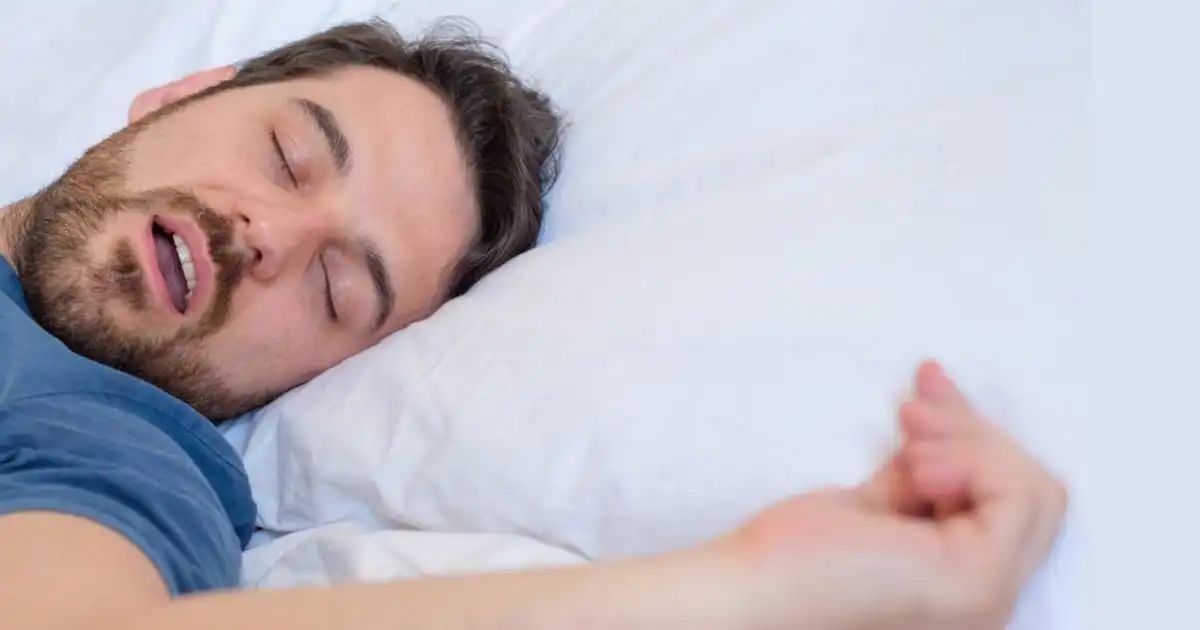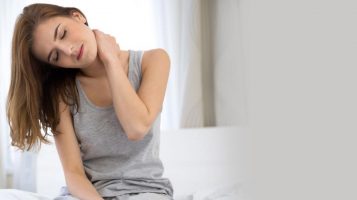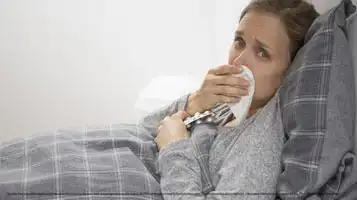Restless Due To Sleep Apnea? The Right Mattress Can Be An Easy Way Out

If you’re grappling with sleep apnea, you’re not alone!
Having dealt with people experiencing this condition for years, we understand how utterly draining it can be. While there are conventional treatments like CPAP machines and surgery, did you know that selecting the right mattress can significantly improve your sleep apnea symptoms?
Discover our recommendations and learn about our selection process to make an informed choice and wake up refreshed! Here, we’ve curated a list of our top 10 mattresses for sleep apnea, categorized by preferred sleeping positions and other criteria.
So, without further ado, let’s dive in!
What Is Sleep Apnea?
Sleep apnea is a prevalent sleep disorder characterized by recurring disruptions in breathing during sleep. Sleep apnea is dangerous if left untreated and may sound alarming. However, with an effective treatment plan and the right mattress, many individuals find sleep apnea manageable.
The ideal mattress for sleep apnea offers robust support and promotes unobstructed breathing. It should complement your chosen sleep apnea treatment. Thus, whether it’s a CPAP machine or an alternative, it should leave you feeling rejuvenated, not foggy!
If sleep apnea has left you feeling fatigued and irritable, it’s time to enhance your slumber. In our comprehensive guide on the top mattresses for sleep apnea, we will delve into the essential factors to consider when choosing a mattress tailored to your specific needs.
Shopping Guide: 10 Best Mattresses for Sleep Apnea!
Stomach Sleeping Position
Medical experts advise folks suffering from sleep apnea to try stomach sleeping. Memory foam mattresses that are firm and support stomach may be some of the best mattresses for stomach sleepers to control sleep apnea. We are enlisting a few of them.
1. Avocado Green Mattress
Avocado Green Mattress is constructed of certified cotton, wool, and latex, making it environmentally friendly. It’s also been certified as having low volatile organic compound emissions, making it easier to breathe. For stomach sleepers, a relatively firm mattress is appropriate.
There is an optional pillow-top add-on if you desire a plusher feel. After sleeping on the mattress, sleep apnea or snoring can be controlled. The mattress comes in varying sizes: twin vs. full, twin XL, king, queen or Cal king.
Eager to Learn More? Read the detailed Avocado Green Mattress Review!
2. Saatva Classic
The Saatva Classic mattress blends a luxurious foam topper with individually wrapped coils for long-lasting support. A firm memory foam layer is also included in this mattress, which provides additional lumbar support. The mattress is supported by 416 tempered steel support coils, which provide for more airflow, support, and long-term durability.
Soft, luxury hard, and firm are the three firmness levels offered by Saatva. For stomach sleepers, the firm mattress is ideal. The mattress sizes range from: full bed vs. queen, twin, twin XL, Cal king and king.
For more information on the Saatva return policy, warranty and trial period, you can read our detailed Saatva mattress review!
3. Layla Hybrid
Layers of copper-infused gel memory foam, 6-inch pocketed coils, and breathable foam gives zoned support to Layla’s hybrid mattress. Because it is dual-sided, users can choose between soft and firm support by just flipping the mattress.
The Firmer side of the Layla Hybrid mattress is ideal for stomach sleeping. The sizes offered are: full size vs. queen, king, Cal king, twin XL and twin sizes.
Read on – Full Layla Hybrid Mattress Review!
Side Sleeping Position
Sleep apnea sufferers may find some comfort by sleeping on their sides. People with sleep apnea may benefit from a memory foam layer that makes sleeping on one’s side more comfortable. While keeping the spine upright, memory foam helps reduce pressure on joints like the hips and shoulders. You can pick up from the following:
4. Helix Midnight Luxe
The Helix Midnight mattress is a hybrid mattress designed for side sleepers and those who toss and turn during the night. This 12-inch-thick mattress’s medium-firm surface is designed to relieve pressure points where side sleepers need it most: at the hips and shoulders. Helix mattress comes in varied sizes namely, twin XL, twin, full, queen, king and Cal king dimensions.
For Extensive Helix Mattress Review, Read More!
5. TEMPUR-Adapt Memory Foam
This TEMPUR-Pedic medium-firm memory foam mattress offers a soft layer that cushions and supports the body, as well as a support layer that gives side sleepers stability and pressure relief. The mattress is covered in an antimicrobial knit cover that is cool to the touch and protects against allergens including dust mites, animal fur, and mildew.
Want To Know More About TEMPUR-Adapt? Read the Detailed Mattress Review!
6. Nectar Mattress
A five-layer memory foam mattress from Nectar conforms to the body while supporting the shoulders, hips, and knees. This medium-firm mattress is made with CertiPUR-US-certified medical-grade visco-elastic foam. It is free of harmful chemicals like flame retardants. It has a quilted memory foam mattress cover that is comfortable and breathable to assist dissipate body heat.
Here’s Our Detailed Review About Nectar Mattress. Read On!
Back Sleeping Position – Here’s What To Opt For!
This sleeping style exacerbates apnea symptoms. In this position, the tongue and throat muscles can completely block the airways. Breathing problems worsen, and the patient eventually has to spend sleepless nights. Doctors advise patients in this situation to avoid sleeping in this position.
Use an Adjustable Bed
By allowing one to sleep with the head slightly elevated, an adjustable bed can help alleviate discomfort. This can help with snoring and other problems. Here are a few mattresses that can be put on adjustable beds:
7. Purple Mattress with Power Base
The mattress is noted for its innovative breathable foam material structure. Though the bed isn’t air-adjustable, it is compatible with the brand’s adjustable base, which is available for purchase separately. The base has under-bed illumination and a massage setting, as well as the ability to alter the position of your head. This mattress is available in dimensions – Purple full size mattress, twin XL, twin, king, queen and Cal king.
For Learning All About the Features of Purple Mattress – Read our Detailed Review!
8. Bear Star Hybrid
For back sleepers, sleep apnea can lead to restlessness, so a comfortable mattress is crucial. The Bear Star Hybrid, with a firmness rating of 6 out of 10, strikes a balance suitable for combination sleepers. Its construction begins with a Celliant® cover, followed by cooling copper-infused memory foam. Comfort foam comes next, and beneath it lays the supportive coil unit that imparts some bounce. The base layer features high-density foam.
This mattress is particularly recommended for lightweight back sleepers seeking a supportive and comfortable sleep surface. If you tend to get too warm at night, this mattress can help you stay cool. Further, it’s a suitable choice for those dealing with joint discomfort.
Learn All About the Bear Star Hybrid From Our Full Mattress Review!
9. Nolah Original
For back sleepers dealing with sleep apnea, the Nolah Original mattress offers a medium comfort level, perfectly suited for light sleepers. Crafted entirely from foam, it incorporates the innovative Nolah AirFoam™, an exclusive material designed to provide a cooler sleeping experience compared to standard memory foam while still offering plush comfort.
The mattress’s second layer comprises latex-like foam, gently transitioning sleepers to the solid foam base below. Nolah’s bottom layer is a substantial 7-inch thick high-density polyfoam, tailored to support the sleeper’s weight and maintain the mattress’s structural integrity.
This mattress is particularly recommended for back sleeping. It is an excellent choice for both lightweight and average weight individuals who prefer sleeping on their backs, offering the ideal balance of support and comfort. Further it is equally suitable for lightweight and average weight side sleepers, delivering a comfortable and supportive rest.
Read Our Detailed Nolah Mattress Review!
10. DreamCloud Luxury Hybrid Mattress
The DreamCloud Luxury Hybrid Mattress is a top-tier bedding solution, engineered to deliver a lavish and cozy sleep. Its hybrid design merges the best of both worlds, blending the traditional spring mattress’s support and pressure relief with the contouring comfort of memory foam.
Crafted with multiple layers, it starts with a plush, quilted memory foam surface, followed by cooling gel-infused memory foam for temperature regulation, and further supported by high-density foam for added comfort and durability. This mattress combines luxurious comfort with advanced technology, making it an ideal choice for those seeking a deluxe and restful sleep experience.
Regardless of sleep apnea, selecting the right mattress is essential for a restful night.
What Are the Types of Sleep Apnea?
Sleep Apnea is a painful sleep disorder that occurs due to breathing difficulties. Breathing repeatedly stops during sleep, causing loud snoring. This sleep deprivation makes one feel tired during the daytime. Sleep apnea can be of three types.
- Obstructive Sleep Apnea is more common. It manifests as recurring episodes of total or partial upper airway obstruction during sleeping. The diaphragm and chest muscles work harder to open the airway as the pressure rises.
Breathing is frequently resumed with a loud gasp or movement of the body, followed by snoring. Snoring and sleep apnea are therefore considered synonymous. These episodes can disrupt sleep, limit the delivery of oxygen to essential organs, and cause abnormal heart rhythms. - Central Sleep Apnea develops when your brain fails to deliver correct signals to the muscles that govern breathing. This is due to a problem with the Central Nervous System’s respiratory control center.
- Complex Sleep Apnea occurs when one suffers from both obstructive sleep apnea and central sleep apnea. People at times harbor a common belief that snoring is sleep apnea. But there are several other complications associated with apnea. Snoring, daytime lethargy or sleepiness, sudden awakenings with a sensation of gasping or choking, nocturnal sweating, headache, forgetfulness, and irritability are all common symptoms of sleep apnea.
If left untreated, sleep apnea can lead to serious health issues like high blood pressure, cardiac problems, and more. When you don’t get enough oxygen while sleeping, your brain suffers, which can lead to serious difficulties.
You can, however, do something simple in addition to your doctor’s appointment. Choosing the right mattress will go a long way toward assisting you. While a mattress will not cure sleep apnea, it can aid in the alignment of the sleeper’s body and provide a better night’s sleep.
What Are the Causes of Sleep Apnea?
Sleep apnea causes differ for the different types of the sleep disorder. These are discussed under.
- Obstructive Sleep Apnea: This happens when the muscles at the back of your throat relax too much during sleep. These muscles normally help keep your airway open. When they relax too much, your airway can get blocked, making it hard to breathe. Thus, when you sleep breathing can stop.
Your brain senses this and briefly wakes you up so you can reopen your airway. This can happen many times in one night, preventing you from getting good sleep. - Centralized Sleep Apnea: This is less common and occurs when your brain doesn’t send the right signals to your breathing muscles while you sleep. This means you might stop breathing for a short time, and it can make it difficult to fall asleep or stay asleep.
What Are the Symptoms for Sleep Apnea?
A few common sleep apnea symptoms have been provided below. These obstructive sleep apnea symptoms need to be identified at an early stage so that treatment can be started early on. Untreated sleep apnea can be fatal and an early treatment can help sleep hygiene for a well-rested you.
- Loud snoring
- Episodes where you stop breathing during sleep, often noticed by someone else
- Gasping for air while asleep
- Waking up with a dry mouth
- Morning headaches
- Trouble staying asleep (insomnia)
- Feeling excessively sleepy during the day (hypersomnia)
- Difficulty focusing and paying attention while awake
- Increased irritability
What Are the Effects From Sleep Apnea On Your Sleep Cycle?
Sleep Cycle
Understanding how sleep apnea affects sleep requires some knowledge of the human sleep cycle, which consists of several stages:
- Light Sleep (Stage 1)
This brief initial stage occurs right after falling asleep and constitutes roughly 5% of total sleep time.
- Deeper Sleep (Stage 2)
This deeper sleep stage comprises about 45% to 50% of total sleep time and may increase with age.
- Slow Wave Sleep (Stage 3)
This is the deepest sleep stage, making up about 25% of sleep time, but this percentage tends to decrease with age. It is challenging to wake someone from Stage 3 sleep, and waking up from it can lead to “sleep inertia,” characterized by mental fog and slowed thinking.
Parasomnias like sleepwalking and sleep-talking can occur during this stage.
- REM Sleep (Rapid Eye Movement)
REM sleep is the stage where dreaming occurs. When a person is in REM sleep, you can observe rapid eye movements beneath their closed eyelids.
Sleep Apnea Effects
Your brain keeps a close watch on your body, adjusting things like heart rate, blood pressure, and breathing. When you stop breathing during sleep, your blood oxygen levels can drop.
Apnea: This happens when you completely stop breathing or hardly breathe at all while sleeping. It’s like being “breathless.”
Hypopnea: This occurs when you’re breathing too little, not enough to keep your blood oxygen levels right. It’s like “under-breathing.”
When your blood oxygen levels drop due to apnea or hypopnea; your brain acts like a safety mechanism. It wakes you up just enough to start breathing again. Afterward, your brain tries to get you back into your sleep rhythm.
What Are the Best Sleep Positions For Sleep Apnea?
Here are the recommended sleep positions for sleep apnea.
- Sleeping on Your Left Side
Sleeping on your left side can help alleviate sleep apnea symptoms.
It also reduces the chances of acid reflux, which can trigger sleep apneas.
- Sleeping on Your Right Side
Side sleeping, especially on your right side, is a preferred position to ease symptoms. This is one of the best position for sleep apnea.
It can reduce snoring and improve blood flow.
- Sleeping on Your Back
Sleeping on your back is the least favorable position for sleep apnea.
It can cause the tongue and soft tissues to relax and obstruct the airway, leading to waking up gasping for air.
- Sleeping on Your Stomach
For people with sleep apnea, sleeping on your stomach is a better option.
Gravity helps keep the airway open, and snoring is less likely.
Apart from the above sleep apnea sleep positions, check out a few effective tips to further improve sleep quality to get a well-rested deep sleep.
Top Tips for Sleeping!
- Tips for Sleeping on Your Side
In the side sleeping position, try to stretch out your body to maximize lung capacity.
Avoid curling up to prevent issues like acid reflux, which can worsen sleep apnea.
- Tips for Sleeping on Your Back
Use a firm mattress and place a pillow under your knees to support your spine and reduce the risk of apneas during sleep. Further, a back sleeper pillow can provide the right amount of cushioning and support.
- Tips for Sleeping on Your Stomach
Another recommended sleep solution is to use a soft pillow. This helps to keep your head in a comfortable position without causing shoulder discomfort.
Sleep with your head down toward the mattress to ensure the airway remains unobstructed.
How Is Sleep Apnea Tested?
You’ll likely receive a referral to a sleep disorder center, where a sleep specialist can assess your need for further evaluation. This evaluation often includes overnight monitoring of your sleep and bodily functions.
Tests for detecting sleep apnea comprise:
- Nocturnal Polysomnography: During this test, clinicians attach sensors in selected parts of your body. Various sensors monitor your heart, lung, brain activity, breathing patterns, limb movements, and blood oxygen levels while you sleep.
- Home Sleep Tests: In some cases, your healthcare provider may provide simplified tests for use at home to diagnose sleep apnea. These tests typically measure heart rate, blood oxygen levels, airflow, and breathing patterns. However, polysomnography is usually preferred over a home sleep test if central sleep apnea is suspected.
If your initial results are inconclusive, your provider might consider prescribing therapy without further testing. It’s worth noting that portable monitoring devices can sometimes miss sleep apnea.
So polysomnography is recommended even if your initial results fall within the normal range. Untreated sleep apnea & life expectancy are directly proportional to each other. So, a timely treatment followed by necessary solutions is crucial.
What Is An Implanted Sleep Apnea Device?
Nerve stimulators are often used to treat sleep apnea. A device attached to the hypoglossal nerve (which controls tongue movement) can stimulate it, preventing the tongue from blocking the airway during sleep.
This device, which is implanted under the skin in your chest, can be turned on and off as needed. It provides a gentle electrical current to keep the tongue in the right position. A similar approach is stimulating the phrenic nerves, which control breathing muscles in the diaphragm.
Smart-Take!
Choosing the right mattress can ease sleep apnea symptoms. Clinical research suggests that sleeping on your side or stomach is better for sleep apnea than sleeping on your back. An adjustable bed that elevates your upper body can be helpful. Additionally, consider mattress firmness – soft to medium for side sleepers and firmer for back sleepers and stomach sleepers.
Further, good support is essential to maintain proper spine alignment. Hypoallergenic mattresses are resistant to allergens like dust mites, and can also improve sleep apnea by addressing allergies. By selecting a mattress that aligns with these factors, you can potentially find relief from sleep apnea-related restlessness and enjoy a more comfortable sleep.
Smart Mattress Buy stands out as the pioneer in mattress review websites by introducing the unique Cashback Rebate Feature, a service not found anywhere else in the industry! So, Select a Mattress that encourages proper spinal alignment, and meets all your sleep needs without a hassle!
FAQs About Sleep Apnea and Sleep Mattress
Q1. What is sleep apnea AHI?
- The Apnea-Hypopnea Index (AHI) represents the total average count of apneas and hypopneas happening per hour during sleep. The American Academy of Sleep Medicine (AASM) classifies AHI into three categories: a) Mild AHI (5 to 15 events per hour of sleep), b) Moderate AHI (15 and 30 events per hour) and c) Severe AHI (exceeding 30 events).
Q2. What are the side effects of sleep apnea treatment?
- The potential complications and side effects of treatments can vary widely, influenced by numerous factors, with the treatments themselves being a significant factor. Your healthcare provider is the most reliable source of guidance on how to reduce or prevent these side effects when feasible.
Q3. Does sleep apnea cause declined body energy and weight gain?
- Disrupted sleep patterns, lethargy and weight gain are some other effects of sleep apnea. Losing weight can become difficult during sleep apnea as the body metabolism reduces significantly.
Q4. Does Nectar mattress have fiberglass material?
- Yes, unfortunately Nectar mattresses have fiberglass material. To sleep on a fiberglass-free mattress read on.
Top Research on Sleep Apnea and the Right Mattress
- https://pubmed.ncbi.nlm.nih.gov/26393957/#:~:text=Phrenic%20nerve%20stimulation%20is%20a,and%20idiopathic%20severe%20sleep%20apnea.
- https://www.ncbi.nlm.nih.gov/pmc/articles/PMC9021938/#:~:text=This%20can%20include%20repositioning%20the,and%20other%20disorders%20%5B3%5D.
- https://www.ncbi.nlm.nih.gov/pmc/articles/PMC10098849/
Kindly be aware that these sources function autonomously from Smart Mattress Buy. They’re here to enhance your grasp on sleep health and mattress-related insights for better well-being.











